

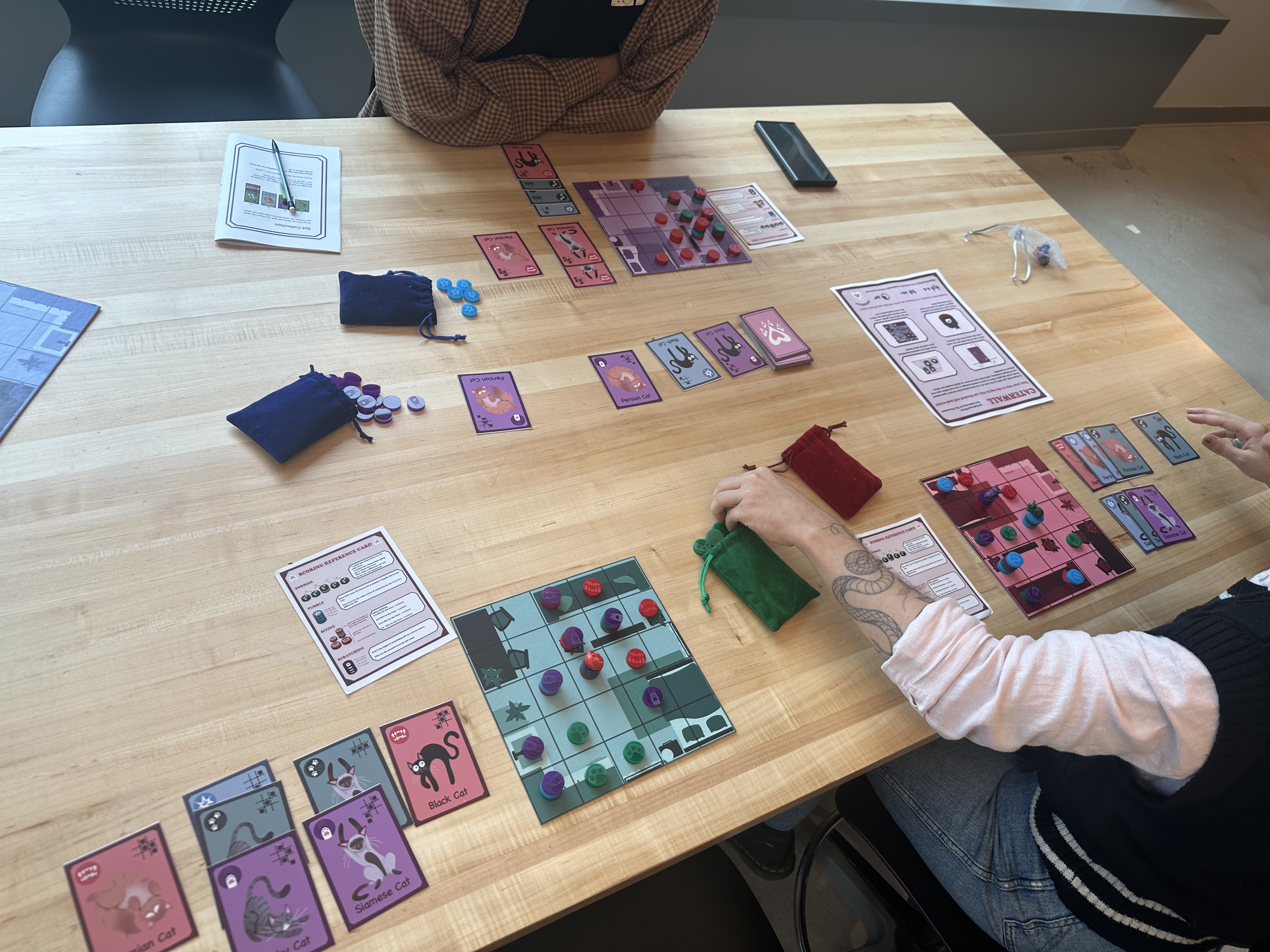
Caterwall is a 3D roll-and-write designed for 2-4 players, playable in 30-60 minutes. It was developed in six weeks in collaboration with Iwo Kmiecik.
As the lead game designer, I was responsible for the design of the wider gameplay and mechanics, as well as the creation and balancing of the point scoring system. I also was responsible for the physical manufacturing of the acrylic pieces.
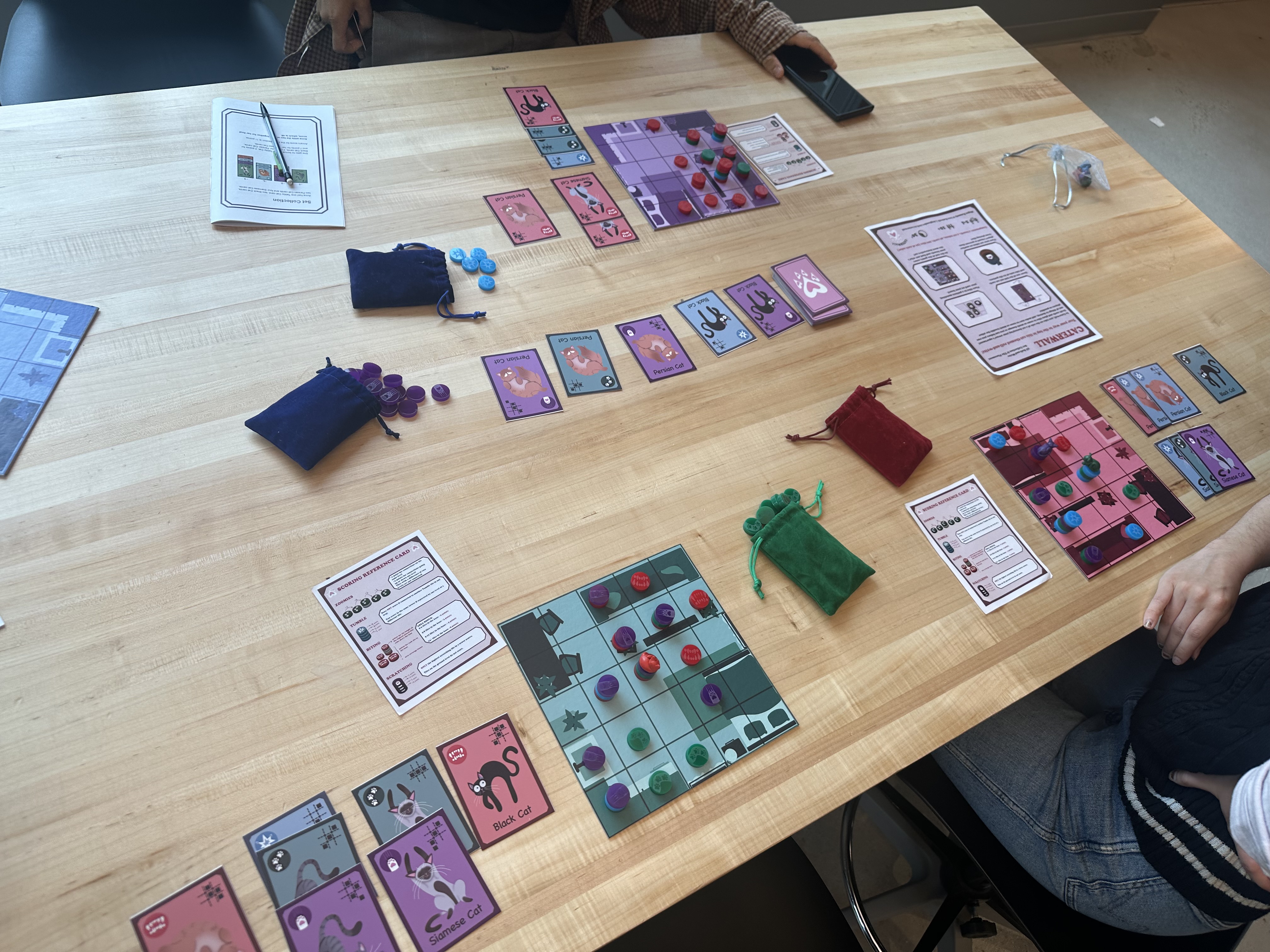
Caterwall centers around the core mechanics of open drafting, set collection, and tile placement. Open drafting is used to draw cat cards from a central draft. The cat cards in turn each have a color associated with them, which dictates the type of piece placed on the player's board, and a type of cat, which ties into a set collection system that boosts player points at the end of the game. The point of the game is to collect as many points as possible.
Caterwall as a game was designed thematically around the idea of playing as cats destroying an apartment. Our selection of core mechanics to base the gameplay around came out of a research period of playing other board games with mechanics we found interesting and thought would synergize well together. We started with an initial rapid paper prototype and then manufactured proper assets later, including boards, acrylic pieces, cat tokens, reference cards for ease of scoring, and a custom deck of cards.
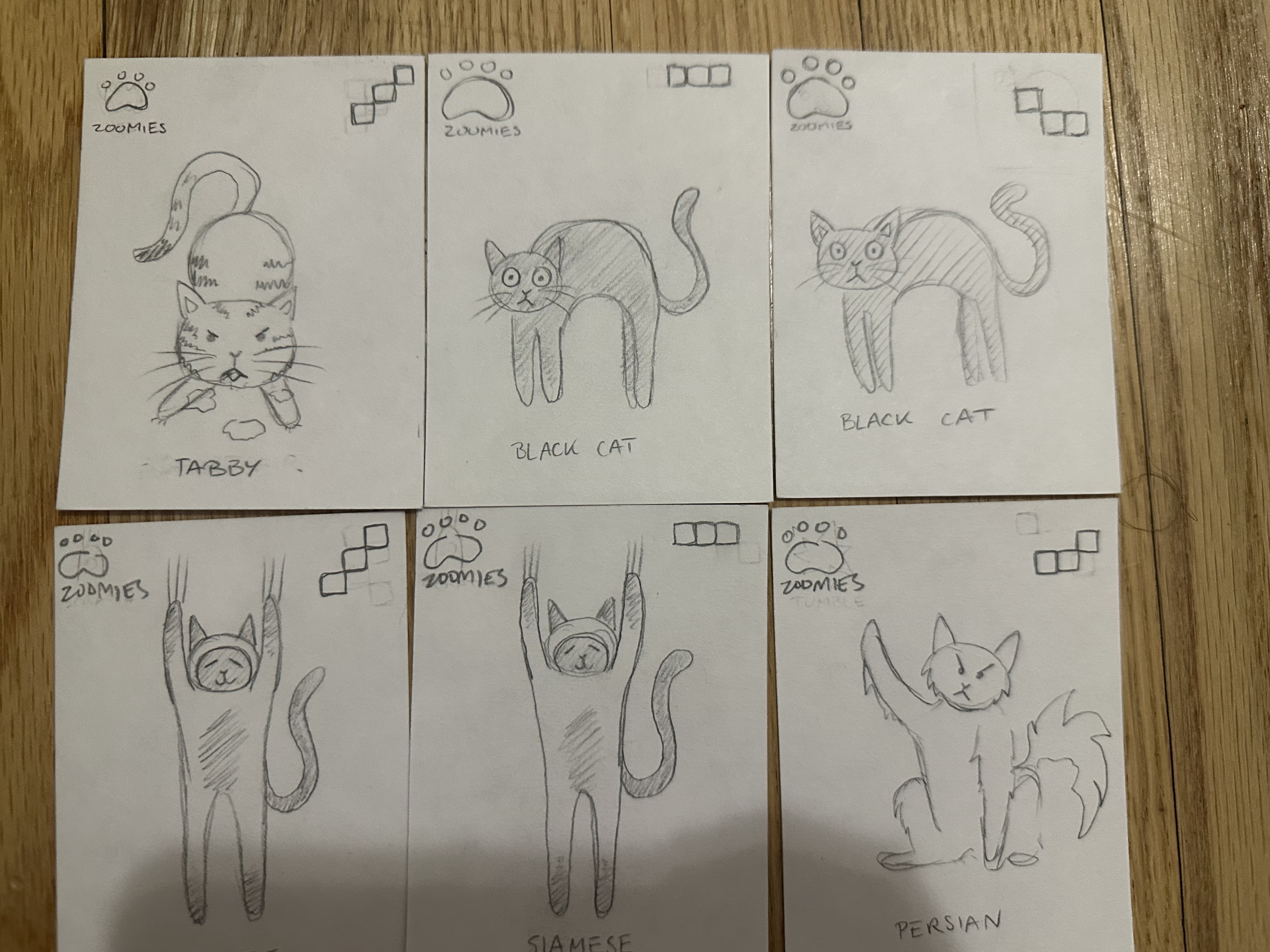
The gameplay of caterwall is concentrated around its cards, which feature several key points of information, namely the type of damage (associated with the color of the card), the type of cat (associated with the fur pattern of the cat), and the tile pattern (the pattern of squares on the corner of the card), which determines the placement of tiles on the player's board. The tiles are color coded with the types of damage.
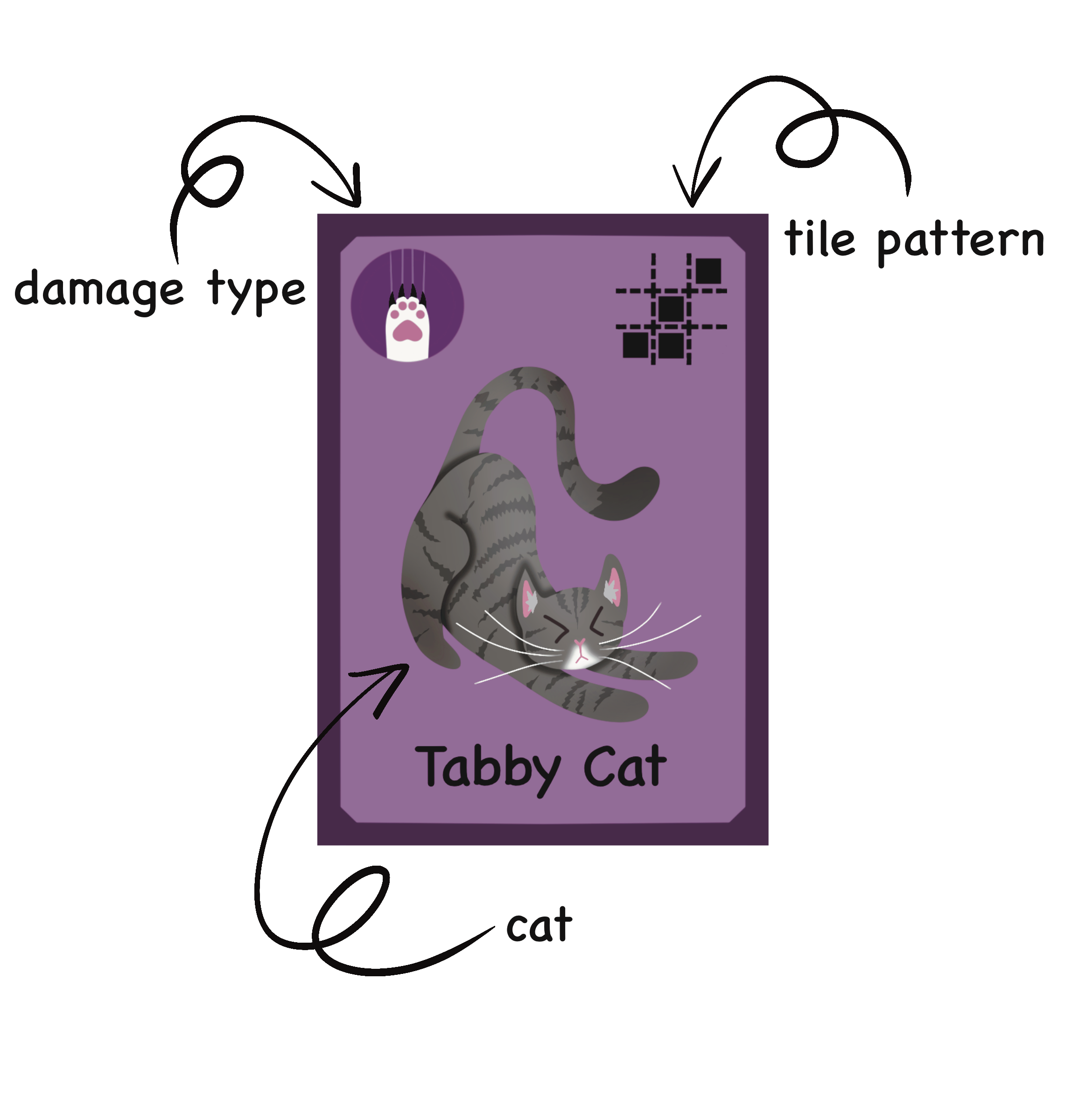
The four different damage types score differently, and were designed as the primary method by which a player scores. As the board represents a player's "room", we wanted gameplay to have a sense of not only horizontal expansion, but also vertical expansion. Both a low amount of remaining horizontal spaces on the board and vertical stacks of pieces reaching a certain height can trigger the end of the game in order to prevent one direction of building from becoming advantageous over another.
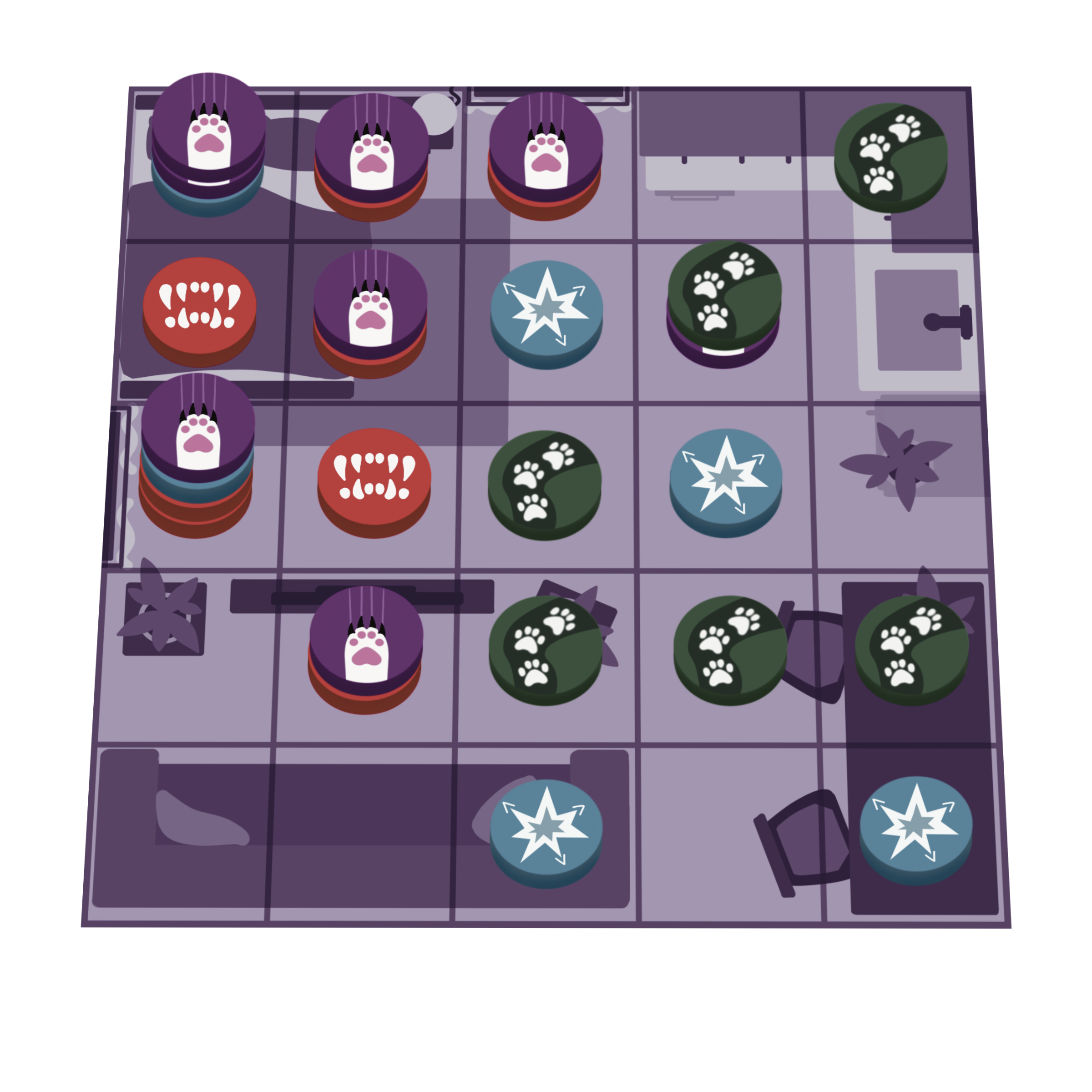
Zoomies as a scoring type is represented with the color green. The goal for zoomies was to get the player to link together green pieces in a chain, focusing on moving horizontally while also jumping up and down vertically, so zoomies scores +1 for each adjacent horizontal piece on the same level height-wise and +2 for a piece that is adjacent horizontally but is on the height level immediately above or below that of the preceding piece.
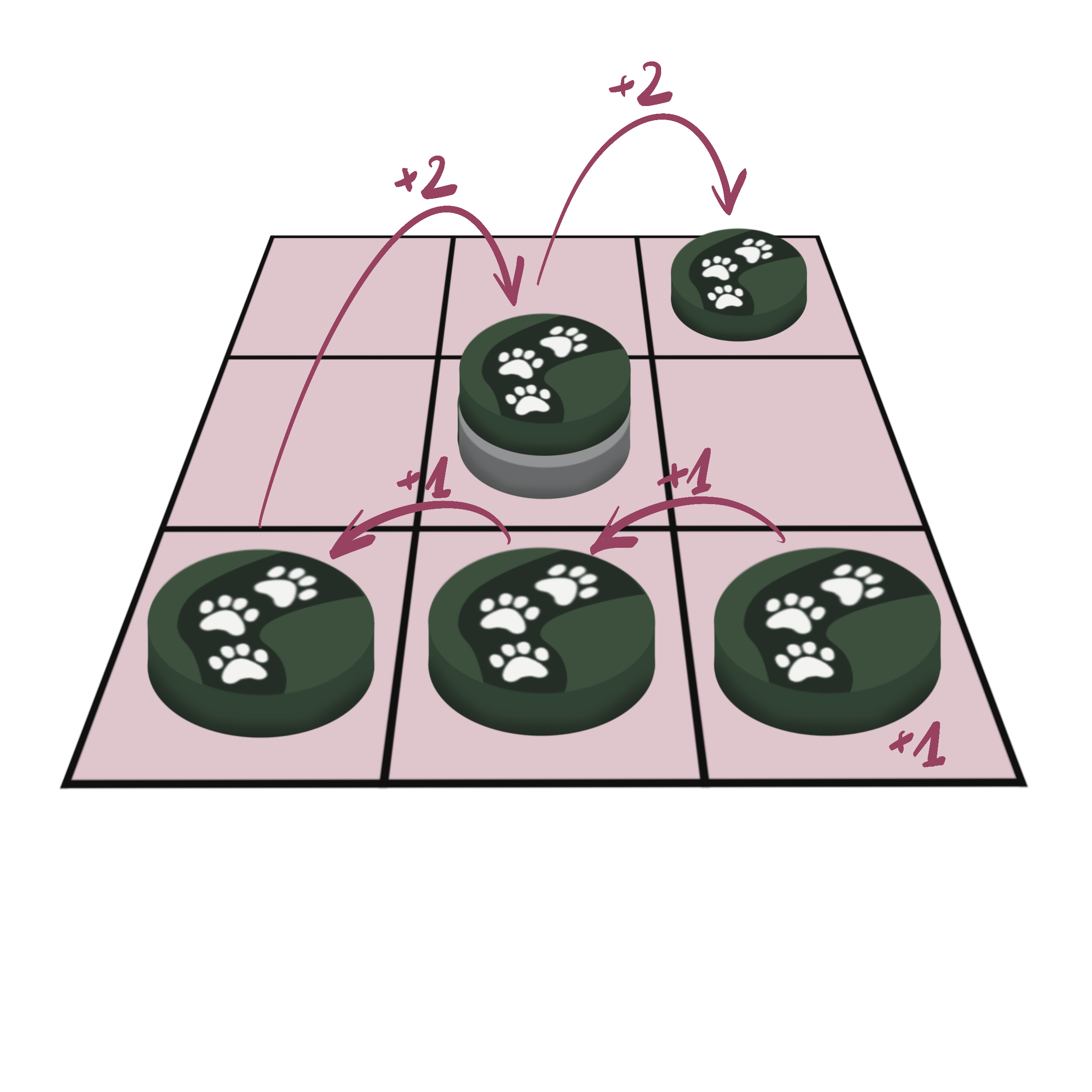
Scratching as a scoring type is represented with the color purple. Scratching awards points depending on how high it is placed in a stack of tiles, with the highest-placed scratching tile awarding points, so the goal was to push the player into playing scratching later in the game. Subsequently, scratching tiles placed on the lowest level (directly onto the board) do not award points. As scratching tiles benefit from being placed at the top of tile stacks, scratching was designed to be played ideally later in the game.
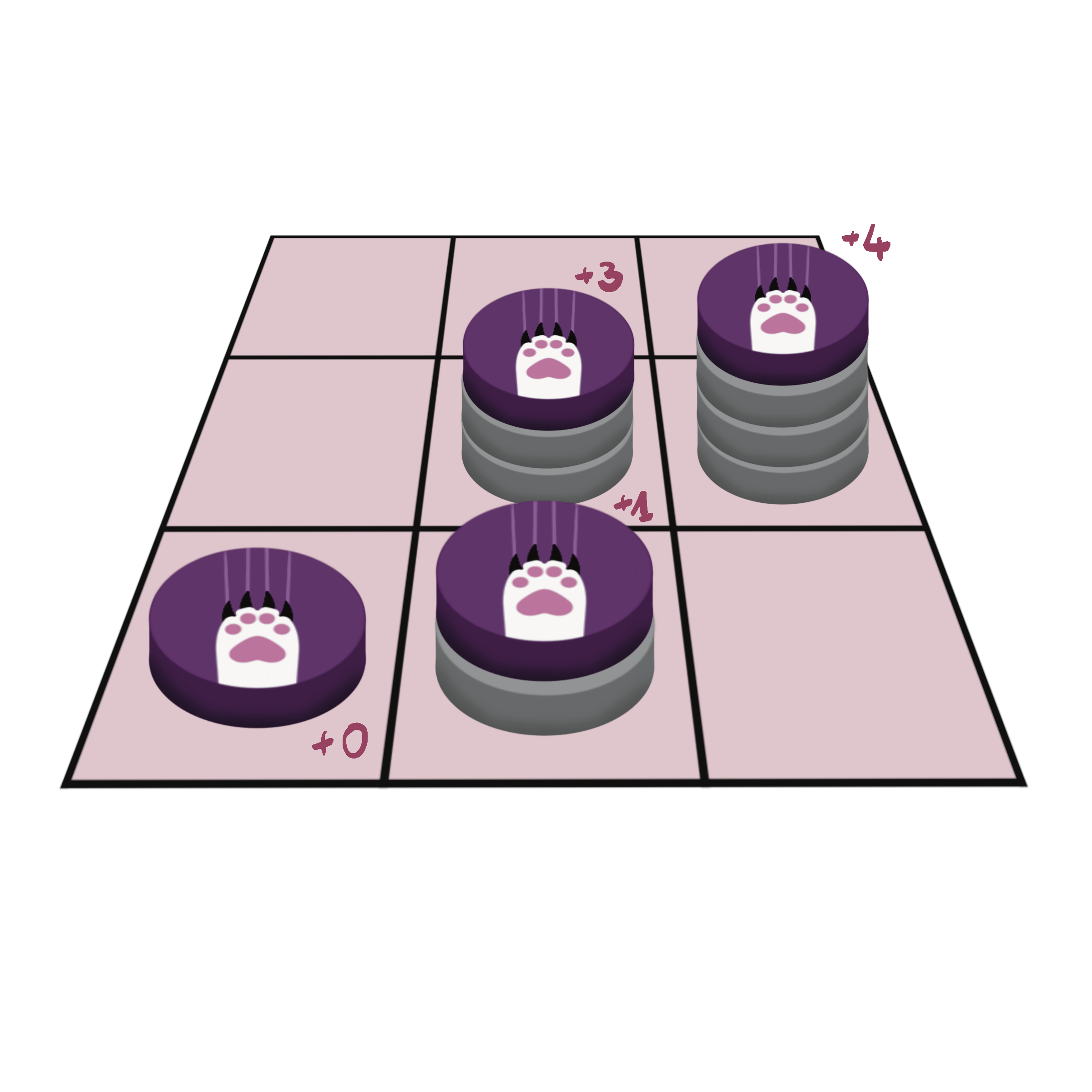
Tumble as a scoring type is represented with the color blue. Tumble also awards points depending on how high it is placed in a stack of tiles, but will not score if it is horizontally or directly placed on top of or below another tumble tile. To make up for this, multiple tumble tiles in the same stack can both score provided they are not touching. Tumble was designed to be playable at any point during the game provided it is placed carefully.
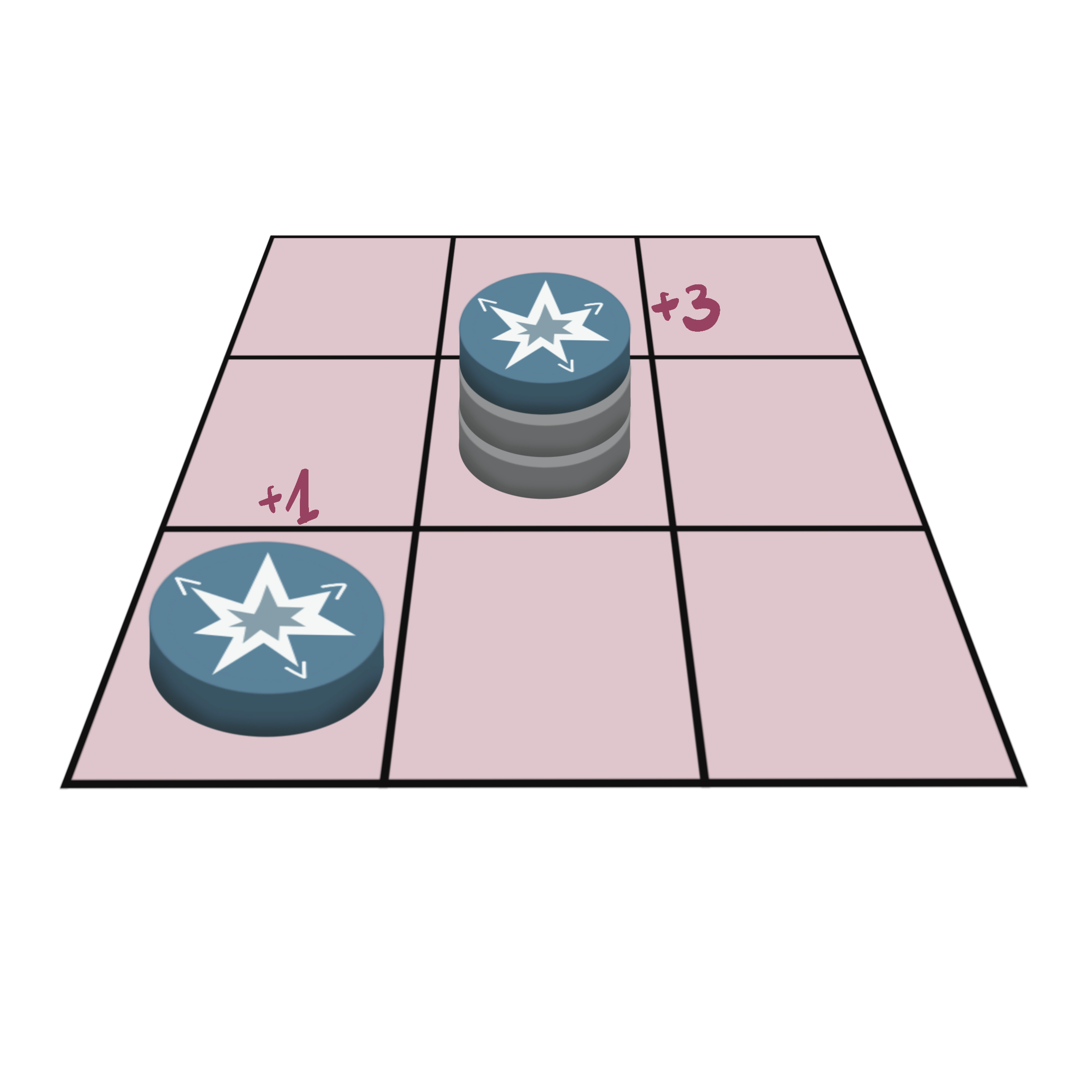
Biting as a scoring type is represented with the color red. Biting has the most complicated scoring system: biting scores based on the sum of connected tiles on a "base" level, plus the height of the tallest biting tile above that base level, plus an additional bonus that varies depending on the size of the base. Biting was designed to score in a volumetric fashion (relying on the existence of both a prominent base, which must be built out in early game, as well as a height tile placed in lategame), and subsequently must be established throughout the course of the game to be effective. Biting was the most challenging scoring type to design in terms of keeping it numerically balanced while also making it not too difficult to calculate for the player.
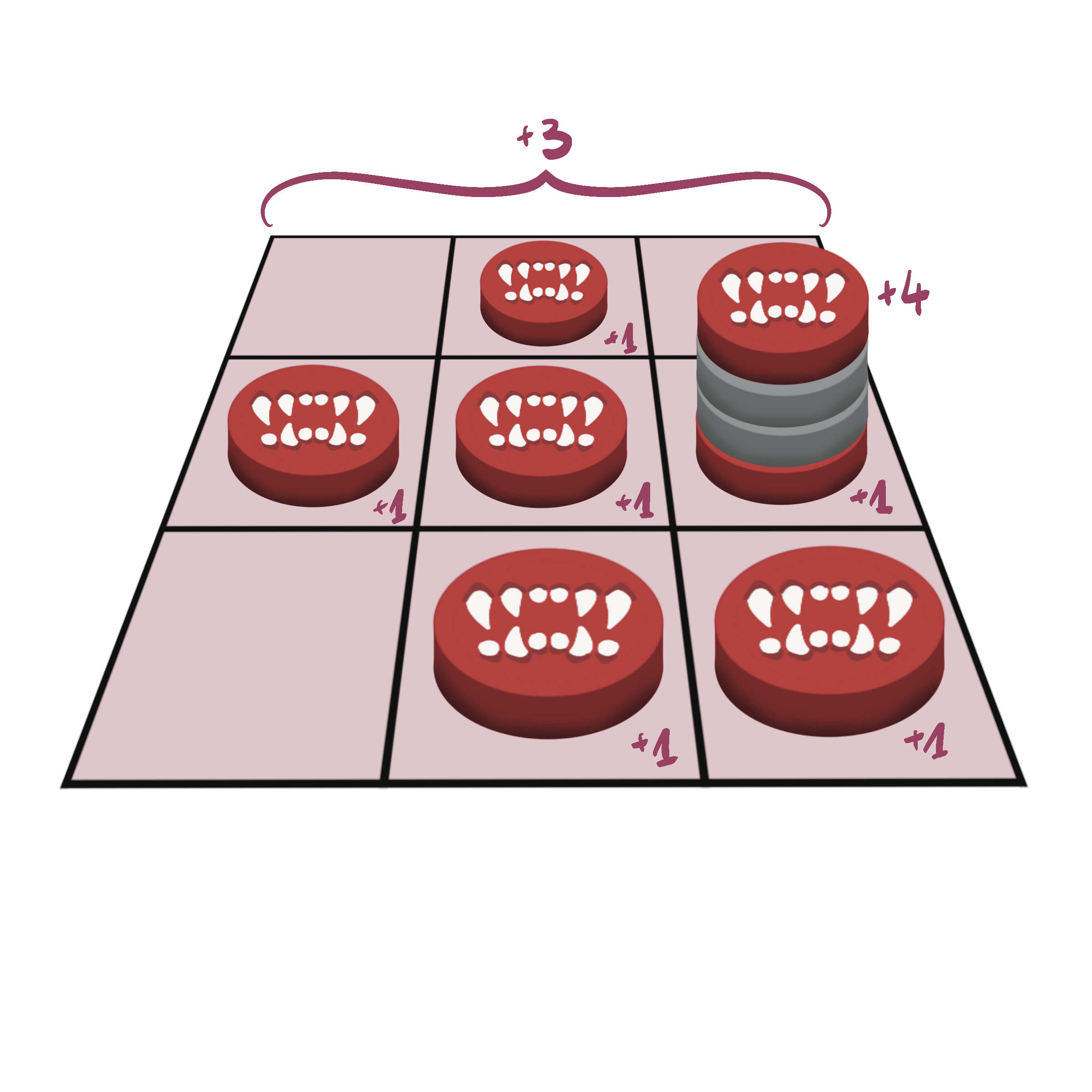
The final scoring method in Caterwall comes from a set collection bonus given at the end of the game, which is based on how many cards with the same cat type a player has (regardless of the damage type of those cards). The player receives a set collection bonus for each cat type where they have more than two cats. The set collection bonus was initially quite small, but throughout the course of playtesting we discovered that player satisfaction was highest when aiming to win via set collection was as viable a strategy as aiming to win via amassing a particular kind of damage type.
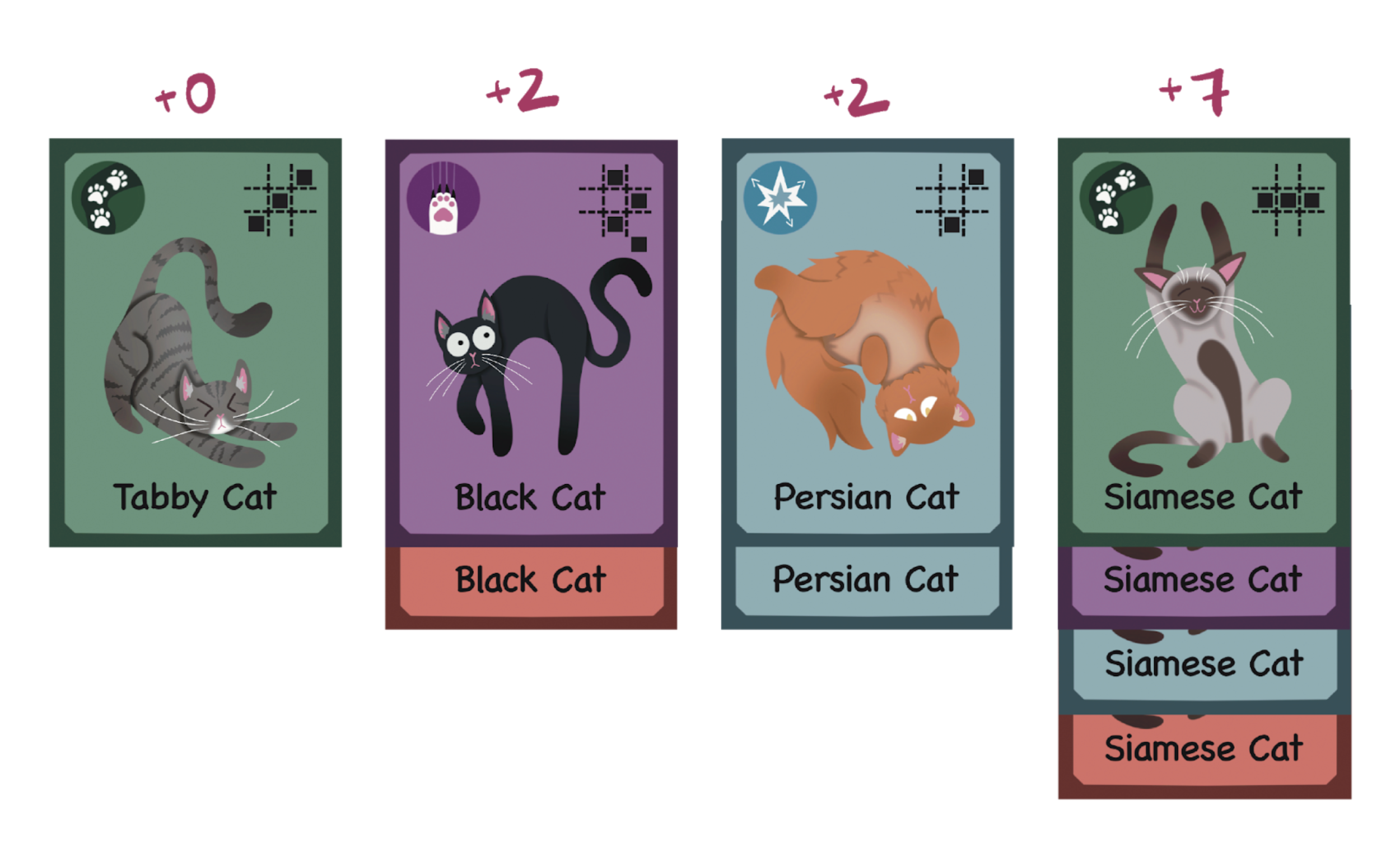
As certain damage types benefit more or less from being placed next to adjacent pieces or at certain times during the game, it became necessary to alter the deck so that the number of cats of each type was equal whereas the damage types were unequal in quantity. Tumble in particular needed to have a smaller quantity of cards than the other damage types because tumble does not score if placed adjacent to itself. The deck subsequently has 40 total cards with 10 cats of each type, 11 biting and zoomies cards, 10 scratching cards (which were reduced because they had a tendency to become overrepresented during the early game, which was undesired), and 8 tumble cards.
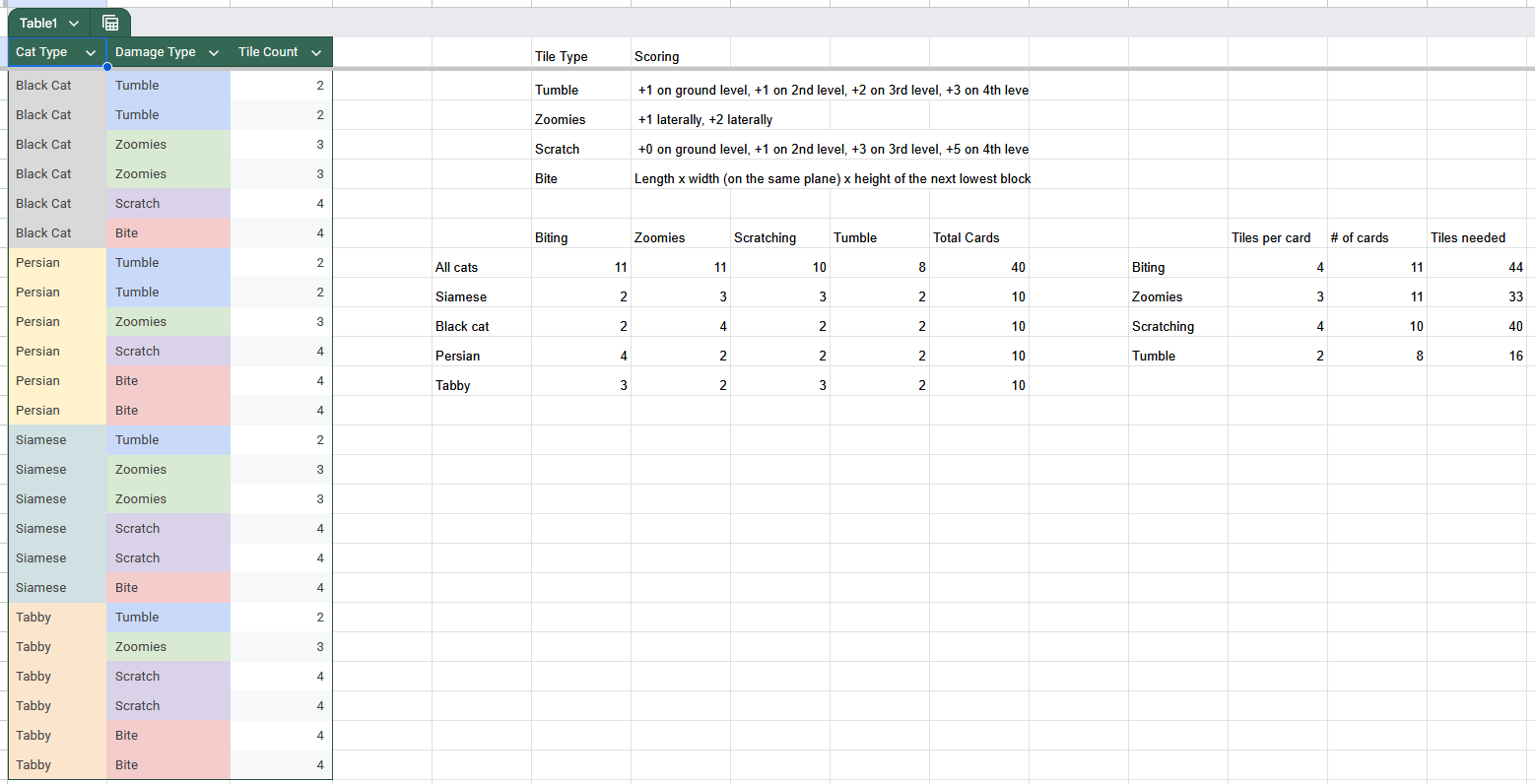
The board was originally an 8x8 grid, but we found that this was too large to encourage vertical gameplay and subsequently reduced the size of the board to a 5x5 grid while also making it physically larger so that it was easier to move pieces.
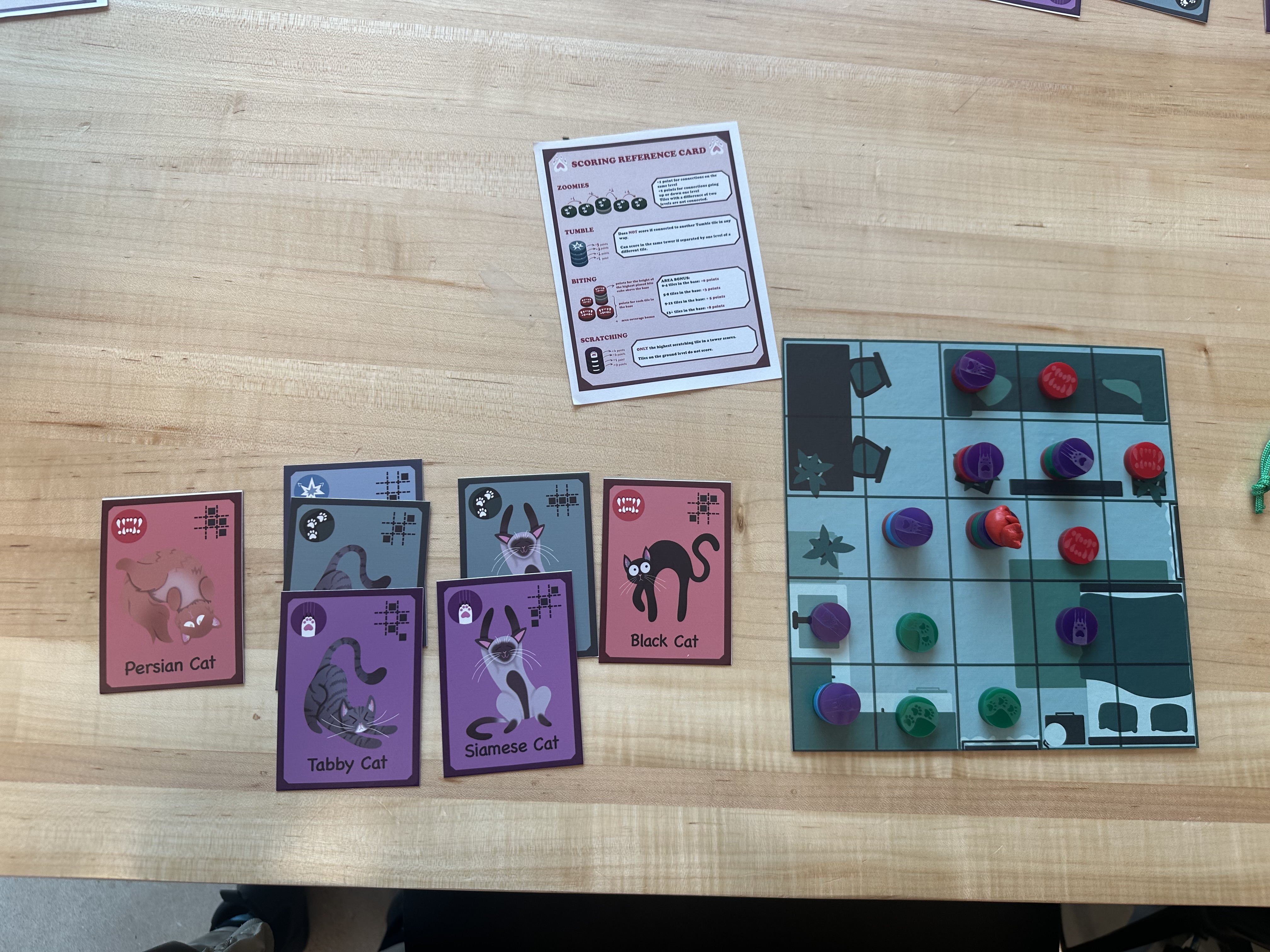
Additionally, to foster player interaction and make the gameplay experience feel less isolated from other players, we introduced the cat tokens, which a player places on a specific spot on another player's board to prevent them from placing a tile there. Cat tokens must be moved to a different player's board each turn in order to prevent one player's board from being consistently dogpiled.